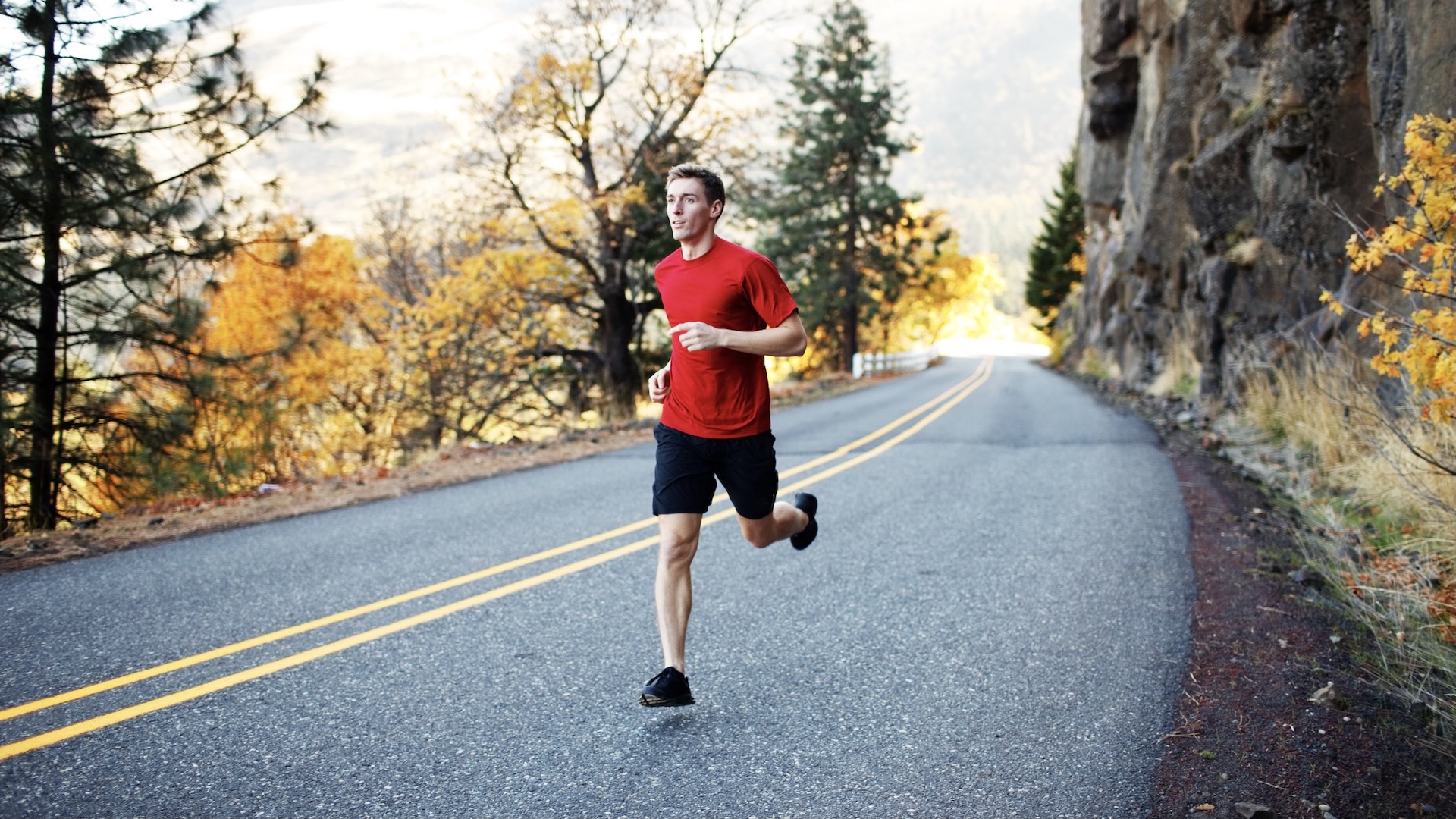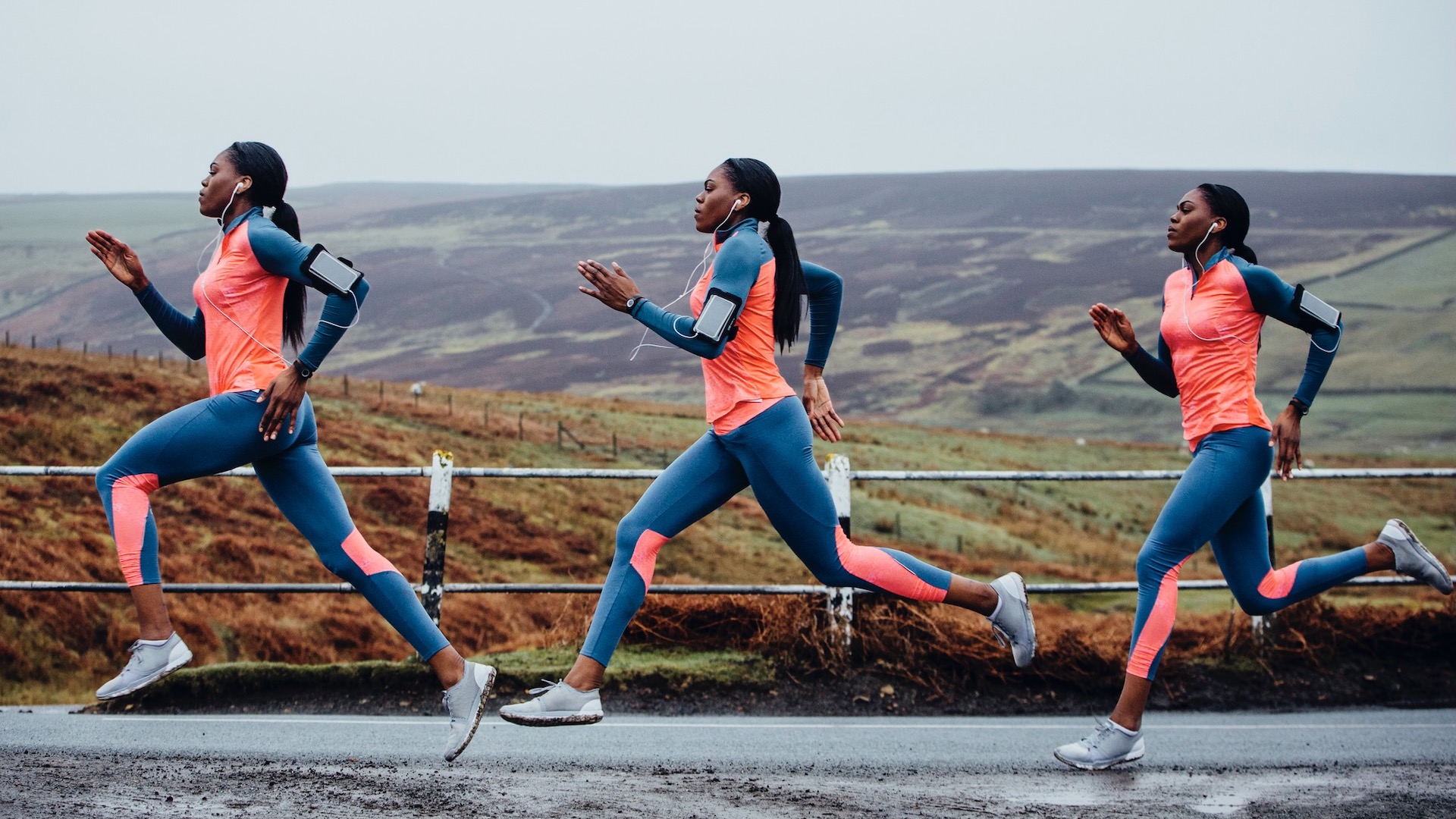What is a good cadence for running – and how to find it?
A guide to good running cadence and expert tips for improvement

It's defined as the total number of steps a runner takes per minute, but what is a good cadence for running?
It has long been claimed that the best runners have a higher cadence, but is this really the case – and would all runners benefit from a higher cadence?
Christian Allen, a qualified Leader in Running Fitness (LiFR) with England Athletics, says: “Cadence is one of two factors that makes up a runners’ average speed or pace. The other is stride length.
"Many runners measure their cadence – sometimes also referred to as ‘stride rate’ – to gauge their personal running speed.
"Keeping track of cadence can can allow you to set personal goals and targets to elevate your running speed and widen your skillset.
"The bottom line is that reaching ‘optimal cadence’ means that you’ll be running at the same speed but with much less effort. This also lowers levels of fatigue."

How can I measure running cadence?
The simplest and most efficient way to measure your running cadence is with a stopwatch or a timer. Christian, who is also the product trainer at Runners Need, says: "All you need to do is set the time for 60 seconds and run for the duration of that time. While running, count the number of times your foot hits the floor until the timer ends and this number will give you your cadence.”
All the latest inspiration, tips and guides to help you plan your next Advnture!
There are also sports watches and devices fitted to your running footwear that can measure your cadence automatically.

What is a good cadence for running?
Typically, it’s suggested that the best runners have a higher cadence and top marathon runners often have a cadence of more than 90, whereas most beginners will run with an average cadence of 156 to 164.
Performance Physique running coach Arj Thiruchelvam reports there have been a number of studies that have focused on Olympic runners.
He says: “In 1984, 50 Olympic runners of varying distances were analysed and 49 of them were discovered to have a cadence of above 180.
“This has since been replicated on numerous occasions with a wide variety of elite athletes who all appear to run with a cadence of 180 to 200 strides per minute.
“This is not a magic number though, it’s simply an encouragement to increase your cadence. This needs to be in conjunction with other aspects of running, such as biomechanics, lactate training and more.”
Christian also points out that modern sports science research has shown that while a cadence of around 180 per minute was traditionally viewed as the best average, these days coaches and sports experts conclude that there is no specific fixed number that will work for everybody.
He said: “For example, beginner runners may find that their cadence may be slightly lower than 180 and that is completely normal. Having a cadence in the 150s to 160s is not a bad thing, nor does it make you less of a good runner.
“In addition height, body build, mass and weight can cause a significant difference in cadence numbers.
“Taller runners will naturally have lower cadence, because they will take longer strides in the same 60 seconds compared to a shorter person.
“Also, a cadence while marathon training will be different when compared to training for a race or casual training. This is why it isn’t one size fits all.”
Saying all this, the general advice from running experts is to aim to increase your cadence, particularly if your cadence is 155 or lower.
Arj, who works with a range of athletes from novices to Team GB Olympians, says: “There are various benefits to increasing your cadence. As well as the potential to be able to fun faster, running at 180 to 200 steps per minute can minimise the landing impact forces and further improve your running economy.
“The lower the cadence number, the more time you spend in the air and this lifts your body mass only for it to hit the ground harder. However, more contacts with the ground directly under your hips will push your body forwards.”
One study showed that higher cadence "reduced the magnitude of several key biomechanical factors associated with running injuries".
Cadence is part of a runner's journey
As with most measured aspects of physical activity, keeping track of your cadence will help you to measure improvements in your fitness journey. But it’s important not to become overly fixated with hitting a specific target
Christian says: "Shorter, faster steps will make you a more efficient runner and will reduce impact on the joints and straining of the muscles. Taking these shorter steps will not only speed up your cadence, but also make it easier to do so.
“But we shouldn't forget that various body compositions, running styles and personal preference in running could impact your own cadence, and it does not contribute to your overall success as a runner.
“But using cadence to improve your form and technique is a much healthier and more productive way to blend it into your running journey.”
How can I change my cadence?
It’s not recommended that you head out and start to run shorter or faster steps or increase your cadence suddenly. This can lead to injuries because you are changing your running technique and it’s likely this will negatively affect your biomechanics.
Most people become better runners by working on speed, strength and technique and as you become a stronger and faster runner it is likely that you will also achieve your optimal cadence and stride length. In this way, you will be able to run at the same speed but with greater efficient and less effort.
Arj says: “The easiest way to encourage a higher cadence is to focus on very short periods of running by exaggerating the sensation of ‘taking too many steps’. It will feel odd if you do it correctly, like you’re not getting anywhere.
“Choose a short segment of a run, taking more steps than necessary and this will shorten the stride, encourage a mid-foot landing and increase that cadence. You can then build on this.”
Various studies, including one in 2015: Spontaneous Entrainment of Running Cadence to Music Tempo also found that many runners naturally increase their cadence when listening to a faster tempo of music.
So what is a good cadence for running?
As we have seen a higher cadence is thought to be better for more efficient running, which can lead to improved strength over time. However, one person's optimal cadence will be different to another runner.
Cadence is one factor in a running training programme but there are plenty of other aspects that can make gains, including consistent training, interval training and strength and conditioning.

Fiona Russell is a widely published adventure journalist and blogger, better known as Fiona Outdoors. She is based in Scotland and is an all-round outdoors enthusiast with favorite activities including trail running, mountain walking, mountain biking, road cycling, triathlon and skiing (both downhill and backcountry). Aside from her own adventures, Fiona's biggest aim is to inspire others to enjoy getting outside and exploring, especially through her writing. She is also rarely seen without a running skort! Find out more at Fiona Outdoors.
